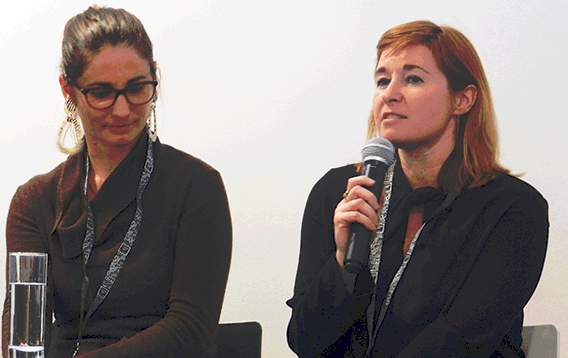
PANEL DISCUSSION: INNOVATE Smart Culture
Modérateurs: Chris Younès & Marine Pierson (ENSAM KAAU)
Participants: Mathilde Marengo (IAAC KAAU) // Agnès Jullian (Technilum KAAU) // Elodie Nourrigat (ENSAM KAAU) //Christophe Carniel (VOGO) // Sarah Herbert-Tack (Architecte) // Vassili Beillas (Technilum KAAU) // Meriam Berrima, Camille De Los Rios, Isabelle Pinsolle (Etudiants MDS ENSAM).
Architecture has always been able to put itself in an innovative position, especially in regard to technological, technological and societal dynamics. We observe that architectural tendencies follow the same rhythm as historical. Today, facing the great challenges of the 21st century, it is important as an architect to get involved in an active operational research in order to offer alternatives repositioning human beings in the center of the projects. Just as each period has had its specificities, those of today and tomorrow are in the hands of architects and this approach is even more difficult because of our rich architectural heritage that need to be taken into consideration and highlighted at the time.
In an interconnected world, it is clear that culture has its place in the making of our societies. Its various manifestations – historical monuments, museums, media, and forms of contemporary art – are an integral part of our daily life in many ways. On the other hand, heritage defines the basis of the identity and the sense of belonging for societies between constant changes and certain instability. Culture contributes to the building of open, inclusive and pluralistic societies. Heritage and creativity are both partners in building dynamic, innovative and prosperous societies.
Innovations must go beyond the technical field to build devices and conditions to produce innovative projects. Indeed, innovation does not only mean using new technologies in order to reach the overall level. It also includes notions likes multi-disciplinarity in order to take into account the various fields that architecture deals with such as art, geography, heritage, economy and many more. Therefor, we consider innovation as «innovative practice», in the very sense of its definition, namely the introduction into a process of production of new processes and new practices. Because while facing economic, technological, environmental and societal changes, it is no longer enough to adapt, it becomes necessary to be able to explore new experimental fields, both urban and architectural. Changing paradigms in the design and production of projects implies developing new synergies not only from disciplines, but also from different professional fields. This means: entrepreneurial, cultural, participative, preventing from dividing the practice of the act of building and of working towards the constitution of inhabited environments. Innovation and experimentation are then thought as an essential vector of development.
In fact on of the most innovative practices is a bottom up approach when the top down way of thinking has been applied for years before. Indeed, many changes in the cities can be done today, by the citizens and coming from the knowledge we get from the past about how cities used to work. In that case, innovation implies almost to come back to the past, a sort of “back to basics” where people were real actors of in the cities and not only living there. Small changes like thinking in smaller scale, being self sufficient, taking care of the waste are actually considered today as innovation since they were forgotten or at least at low priority after the modernist movement. In that case, the part of co-working between authorities and citizen is crucial because experiences showed that an action wouldn’t be successful if only one of the parts works by it self, from its own initiative.
Technology is a tool and not a mean in this thought about innovation. In its different forms, it becomes a method to make people interact with each other, no matter of distances of or languages, and to put them together through a common project. This can be done with social media, new smartphone applications, virtual reality, and much more. The revolution in the ways of thinking the cities is therefor not a technological revolution but definitely a mental revolution before all.
A recurrent question about smaller scale interventions concerns the hybridity and the way to link them together. It is proper to architecture to deal with different professions but the question of innovation is how to become better at it and make these relations smoother and even indispensable. The key to better projects that will have a real impact is in the complementarity of the different fields and how they are articulated together. This is why; at some point the main question about innovation is the projects themselves and how they come together, from the first thought to their accomplishment.
This is linked to the idea that people should get back this idea of sense of belonging to the place they live in. Culture should be a way to motivate people and put them together in the aim to go for these innovations. Culture, by its flexibility and the wideness of subjects it relates to is a tool to rethink and reinvent our societies, through the role of citizens also. Heritage is the base of people’s identity so smaller projects od adaptive reuse, new usage, can have an impact at the scale of a neighbourhood but also at a much bigger scale and start a movement of global change in citizens minds. Eventually, all these changes that are the base of innovative projects are facilitated by the education system from a very young age. In architecture school, one of the essences of education is to learn this needed interaction between fields but this culture should be instigated in children minds in all studies to make this idea become natural. Like in many societal questions, education remains the base of global improvements in the ways of thinking.
